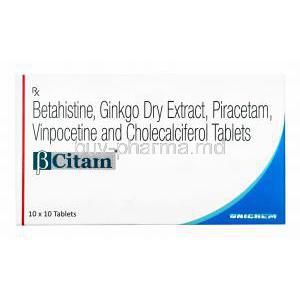Otivet Ear Ointment
- I. Introduction
- II. Composition of Otivet Ear Ointment
- Active Ingredients
- Excipients and Their Roles
- Unique Formulation Characteristics
- Betamethasone Valerate vs Triamcinolone Acetonide
- Clotrimazole and Betamethasone Dipropionate
- Clotrimazole vs Butenafine Hydrochloride
- Miconazole vs Clotrimazole
- Tolnaftate vs Clotrimazole
- Terbinafine vs Clotrimazole
- Ketoconazole vs Clotrimazole
- III. Uses of Otivet Ear Ointment
- IV. How Otivet Ear Ointment Works
- V. Dosage and Administration
- VI. Common Side Effects
- VII. Serious Side Effects and Adverse Reactions
- VIII. Off-Label Uses of Otivet Ear Ointment
- IX. Interactions With Other Medications
- X. Warnings and Contraindications
- XI. Important Precautions
- XII. Overdosage Information
- XIII. Careful Administration
- XIV. Storage Recommendations
- XV. Handling Precautions
I. Introduction
Otivet Ear Ointment is a product designed to effectively treat various ear issues in pets, such as dogs and cats, with powerful healing ingredients that combat infections and inflammation in their delicate ear canals. The ointment is commonly used to treat otitis, a condition that can recur in pets.
Otivet aims to address issues such as bacterial growth and fungal activity, as well as mite infestations, to improve comfort and hearing ability with reduced reliance on systemic medication. It possesses properties that combat bacteria and fungi while also reducing inflammation.
- Tailored for use and rapid uptake.
- Helps decrease smell and discomfort.
- Reducing drainage in impacted ears.
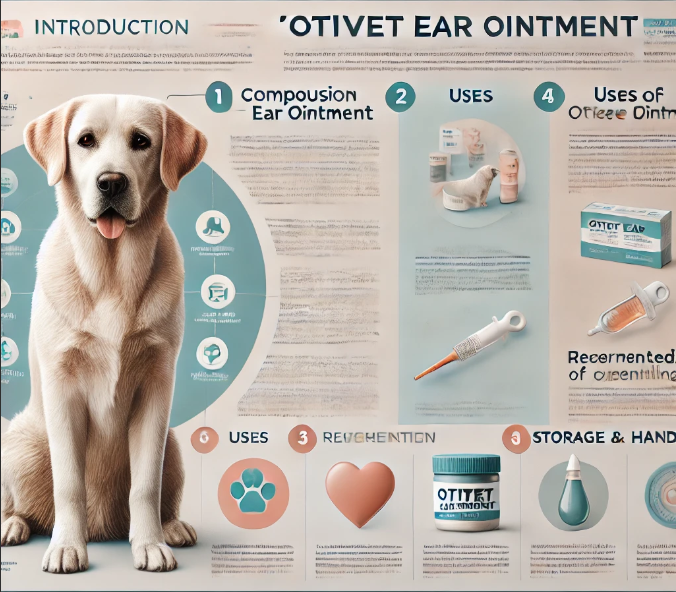
Importance in Veterinary Medicine
In the field of medicine, it is crucial to address ear issues efficiently to avoid long-term problems, as well as additional health issues and behavioral changes caused by discomfort. Otitis Ear Ointment plays a role in tackling these challenges from the start, especially in:
- Ear infections caused by Staphylococcus or Malassezia, whether acute or chronic.
- Ear mites (scientifically known as Otodectes cynotis) are responsible for infestation.
- Proper maintenance, especially after cleaning, is particularly important for dog breeds prone to health issues, such as Cocker Spaniels and Poodles.
II. Composition of Otivet Ear Ointment
Active Ingredients
Otivet Ear Ointment contains a mix of substances aimed at treating infections and inflammation in the outer ear canal, usually consisting of the following key components:
- Clotrimazole is an treatment that works well against various types of fungi, like dermatophytes and yeasts such, as Malassezia pachydermatis.
- Betamethasone Dipropionate is a cortisone drug that helps reduce inflammation and itching while also constricting blood vessels.
- The medications Gentamicin or Neomycin (found in formulations) are a type of aminoglycoside antibiotic that works against both Gram-negative and Gram-positive bacteria.
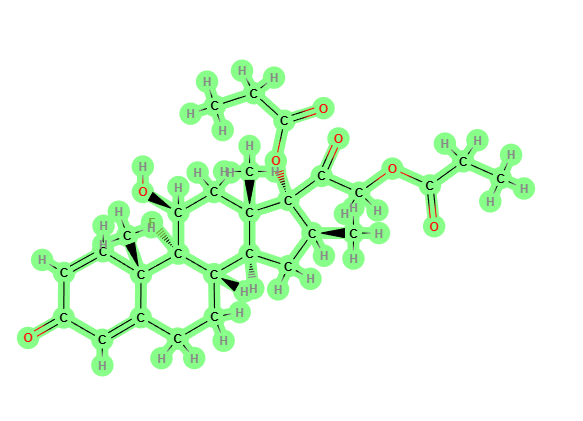
Excipients and Their Roles
The ingredients in the formulation improve the stability of the drug. Help it to be delivered and absorbed effectively in the ear canal.
- Propylene Glycol serves as both a humectant and a solvent to boost the absorption of components.
- Mineral oil or paraffin base functions, as a moisturizer and barrier agent that extends the duration of contact, with the skins surface.
- Isopropyl Myristate enhances the skin's ability to absorb and serves as a transporter for substances that dissolve in fats.
Unique Formulation Characteristics
Otivet Ear Ointment sets itself apart with a lipid base that doesn't contain water and helps it stick around in the outer ear canal for more extended periods.
The formula guarantees:
- Targeted delivery to areas without spreading throughout the entire system.
- Minimizing the chance of ear damage through medication application.
- Quickly easing the symptoms of pain and discomfort caused by itching and inflammation.
Betamethasone Valerate vs Triamcinolone Acetonide
Both cortisone medications are utilized in treatments for skin and ear conditions in the fields of dermatology and otolaryngology, respectively. Betamethasone Valerate is known for its potency. Prolonged anti-inflammatory benefits when compared to Triamcinolone Acetonide, which is considered moderately potent and commonly selected for less severe cases of inflammation. Betamethasone stands out in Otivet due to its effectiveness in managing long-term inflammation in areas such ass the ear canal.
Clotrimazole and Betamethasone Dipropionate
These two components work together to effectively fight infections and reduce inflammation in the affected skin area. Clotrimazole targets fungal cell membranes by blocking ergosterol production, and Betamethasone Dipropionate quickly relieves symptoms of swelling and itching. They work well together to tackle infections and skin inflammations, utilizing their different yet complementary actions.
Clotrimazole vs Butenafine Hydrochloride
Clotrimazole is a medication from the imidazole class known for its effectiveness against a range of yeast and fungal infections on the skin and nails. Butenafine Hydrochloride is a type of benzylamine compound widely recognized for its ability to kill fungi and its longer retention in tissues. Despite this fact, due to its established safety record and ability to be used safely with corticosteroids, Clotrimazole remains the preferred choice for treating ear infections in practice.
Miconazole vs Clotrimazole
Both Miconazole and Clotrimazole are classified within the imidazole group; however, Miconazole is known to demonstrate a range of antifungal effects and even possesses some antibacterial properties as well..Nevertheless, Clotrimazole is the preferred choice for ear treatments due to its higher acceptance rate among users and effectiveness in treating Malassezia infections.
Tolnaftate vs Clotrimazole
In treating ear infections in dogs and cats, known as otitis externa, which affects the outer ear. Clotrimazole is preferred over tolnaftate to treat infections caused by dermatophytes because it can target both fungi and yeasts commonly found together in cases. Tolnaftate is only effective against dermatophytes and not yeasts, which limits its usefulness in this scenario.
Terbinafine vs Clotrimazole
Terbinafine is an allylamine that can kill fungi and penetrate tissues effectively, making it suitable for treating skin and nail infections. The use of Clotrimazole is preferred for ear canal infections due to its efficacy, and it is a better option for combined therapy when used in conjunction with corticosteroids.
Ketoconazole vs Clotrimazole
Another imidazole called Ketoconazole is used both systemically and topically; however, the risk of toxicity is higher if absorbed into the body. The antifungal Clotrimazole provides an option with great effectiveness and few side effects, making it a preferred choice in numerous veterinary ear products.
III. Uses of Otivet Ear Ointment
Primary Indications: Treating Otitis Externa in Pets
The product can effectively address triggers such as overgrowth, parasitic infestations, or allergic reactions.
- Yeast overgrowth known as Malassezia pachydermatis is present.
- Staphylococcus. Other types of Gram-positive cocci.
- Ear mite infestation (caused by Otodectes cynotis).
- Suffering from atopic or allergic dermatitis can result in subsequent ear infections.
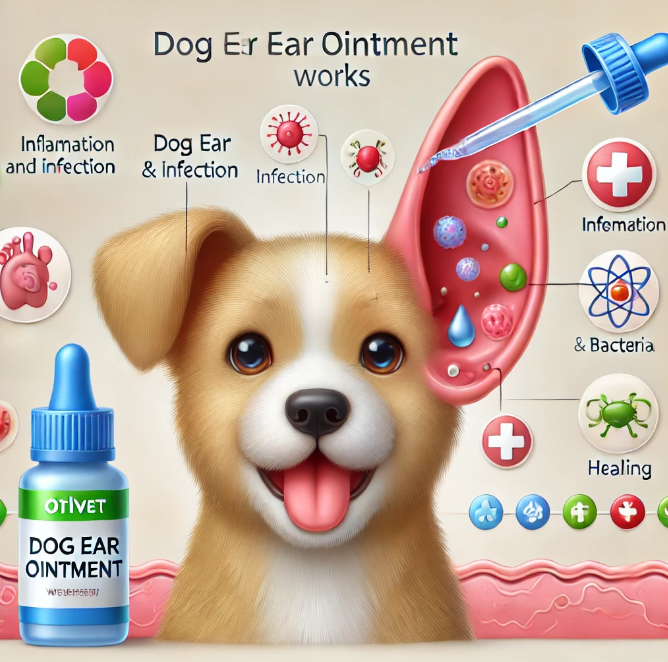
Benefits for Ear Infections and Inflammation
Otivet Ear Ointment provides relief from symptoms and offers lasting effects by simultaneously tackling infection and inflammation, which helps reduce reliance on oral medications and lowers the risk of side effects.
Its key clinical benefits include:
- Reduction of itching sensation and redness, as well as decreased swelling in the ear canal.
- Preventing the growth of bacteria in the damp ear canal.
- Reducing the risk of long-term ear issues by taking action.
- Increased patient adherence is attributed to the convenience of application and reduced discomfort.
Overview of Veterinary Applications
In addition to treating ear infections like otitis externa, it carries significance in the field of veterinary ear care. It is used in situations where inflammation and the presence of microbes co-occur:
- After cleaning, it's essential to provide care for animals with earwax or chronic buildup of cerumen.
- After taking out objects or plant material from the ear canal, additional therapy may be needed.
- Preventive care is necessary for dog breeds that are predisposed to narrowing or thickening of the ear canal.
- Managing infections in animals with weakened systems.
IV. How Otivet Ear Ointment Works
Mechanism of Action of Active Ingredients
Otivet Ear Ointment blends antifungal properties with antiinflammatory agents to work together in combating pathogens and promoting ear health restoration effectively. Its diverse components are tailored to address elements of infection and inflammation for a treatment strategy.
- Clotrimazole works by blocking the production of ergosterol in the membranes of cells, which results in permeability and ultimately causes the cells to die off.
- Betamethasone Dipropionate works by targeting the receptor to decrease the production of cytokines, which helps alleviate swelling and irritation while also reducing redness and itching sensations.
- When Gentamycin or similar aminoglycosides attach to ribosomes during the protein synthesis process. Causes the bacteria to die quickly.
This trio guarantees protection against the ear pathogens while also tackling the symptoms associated with the illness.
Gentamycin Mechanism of Action
The way Gentamicin works is by attaching to the 30S subunit of ribosomes, effectively killing bacteria. This connection disrupts the translation process, leading to the creation of harmful proteins by utilizing amino acids.
Making errors in reading mRNA and stopping protein chains early impacts the survival of bacteria. Gentamycin shows effectiveness against;
- Pseudomonas aeruginosa
- Staphylococcus aureus
- Proteus and other Enterobacteriaceae
Its quick start and strong effectiveness are handy for handling ear infections in areas that're damp and filled with debris.
Impact on Bacterial and Yeast Infections
Otivets' ranging capabilities make it effective in treating the dual aspect of outer ear inflammation. This commonly involves the presence of both bacteria and fungi at the same time. The combination of Gentamycin and Clotrimazole works together to break down the layer that typically forms in chronic infections, leading to improved penetration and a quicker recovery.
- Eliminates bacteria that cause both ongoing infections, regardless of their Gram classification.
- Eliminates Malassezia species, which are often associated with allergic ear infections.
- Enhances the effectiveness against microbes by combining two mechanisms.
It's crucial to have targeted treatment for patients who experience recurring infections or don't respond well to conventional therapies.
Effectiveness in Reducing Ear Inflammation
Inflammation in the ear canal can quickly worsen due to irritation or allergies, or exposure to microbes or toxins. Otivet addresses these problems by using Betamethasone Dipropionate, a glucocorticoid that has strong pharmacological effects.
Preventing the activation of the acid cascade,
- By inhibiting phospholipase A₂.
- Reducing the arrival of cells and the widening of blood vessels.
- Reduction in swelling of the membrane, along with decreased redness and pain, can be observed after applying the treatment.
V. Dosage and Administration
Recommended Dosage for Different Animals
Otivet Ear Ointment is designed for use on the parts of pets, such as dogs and cats, specifically. It's essential to adjust the dosage according to the type of animal and its size, as well as how serious the issue is. This personalized approach helps in making sure that the treatment is effective while also minimizing any exposure to ingredients.
- For Small to medium-sized dogs, use around 3 to 6 drops in each affected ear.
- For Large dogs, you may need to use around 5 to 8 drops because they have larger ear canals and more surface area to cover.
- For cats, with ear issues or discomforts 2 to 4 drops should do the trick due, to their ear canals and heightened sensitivity.
It's recommended to consult a vet when dealing with elderly pets or those with existing skin or health issues.
Application Techniques for Optimal Results
To effectively treat an ear infection or inflammation, it's essential to apply Otivet Ear Ointment to ensure the medication reaches the affected area at the correct levels and spreads evenly throughout the ear canal.
Follow these steps when applying the ointment for results:
- Gently warm up the ointment by holding the tube in your hand before applying it to make it flow better and reduce the shock of cold on your skin.
- Before applying anything to it make sure to clean the outer ear canal, with an ear cleaner approved by a veterinarian to get rid of any wax, debris, or discharge that may be present.
- Administer the specified number of drops directly into the ear canal, oriented vertically. Gently rub the area around the ear in a circular motion for 30 to 60 seconds to ensure the ointment is spread evenly.
- Let the animal shake its head naturally to help spread the treatment.
Be cautious not to touch the applicator tip to prevent any contamination of the product.
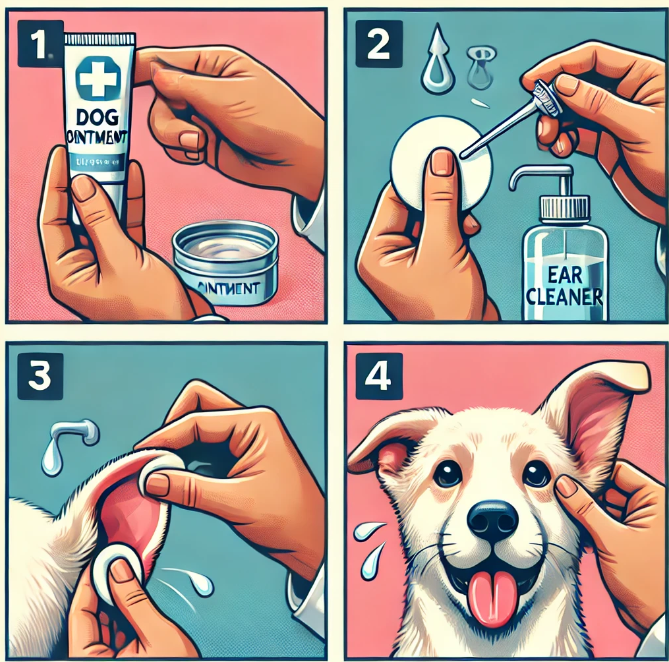
Frequency and Duration of Treatment
The amount of time and frequency of use for Otivet therapy will vary based on the severity of your symptoms, the type of infection present in your ear canal, and the underlying cause of otitis. It's essential to adhere to the treatment plan to ensure the infection is completely eradicated and to prevent it from recurring.
- Acute infections are usually given once or twice a day for a period of 7 to 10 days.
- For recurring illnesses, treatment may need to be continued for 2-4 weeks, depending on the patient's response and the results of any cultures taken.
- For animals at risk, it might be suggested to use the treatment, such as every 3 to 5 days, for prevention or upkeep purposes.
VI. Common Side Effects
Minor Side Effects and Their Management
Otivet Ear Ointment is usually well-received by both dogs and cats when used according to instructions. There may be some side effects associated with the use of all medications; however, these effects are generally temporary and do not require stopping unless they become more severe.
Common minor side effects include:
- Temporary redness, near the ear canal or ear, caused by irritation, is known as localized erythema.
- Short term itching can escalate due, to heightened feelings of discomfort when the active ingredients first start interfering with pathogens, in the body.
- After the inflammation reduces a watery discharge might occur as the body expels debris in an reaction.
- Residue of oil refers to the build up of ointment that remains on the fur, around the ear canal area in breeds, with hair.
Approaches for managing strategies:
- Carefully remove any ointment using a gauze to avoid clumping or leftover residue from forming.
- If you notice any redness or slight swelling, try using a compress to help soothe the area externally.
- If you observe any irritation after using the product for your pets health care needs temporarily decrease the application frequency with guidance from a veterinarian.
Typically, these mild responses tend to subside after a day of ongoing treatment or slight adjustments in dosage.

Signs to Monitor During Treatment
Although severe reactions are rare occurrences, in cases where they do occur, caregivers must remain vigilant. Early detection of any signs of adverse reactions or treatment ineffectiveness is crucial to avoid complications or widespread impacts.
It is essential to keep an eye out for the following indicators:
- Repeated. Shaking of the head that continues after a few days of treatment.
- There may be a smell or pus discharge, suggesting an infection that is difficult to treat.
- The ear canal may close due to sensitivity or intense inflammation.
- Changes, in behavior, like feeling lazy or irritable and grooming much in the area that received treatment.
- In some instances, absorption symptoms may include vomiting, diarrhea, or changes in appetite.
VII. Serious Side Effects and Adverse Reactions
Potential Severe Reactions
Some of the reactions that may manifest include:
- Rare instances of issues may arise, such as head tilting or loss of balance, when there is a perforation of the eardrum.
- Sudden swelling of the face or ears, along with difficulty breathing or collapse, could indicate hypersensitivity or anaphylaxis.
- Prolonged usage of corticosteroids may lead to adrenal suppression symptoms, such as fatigue and muscle weakness, as well as alterations in thirst and urination patterns.
- In individuals with skin conditions or when combined with strong topical treatments
Emergency Response to Adverse Effects
In the event of a reaction, suspicion arises regarding an animal's health condition. It is crucial to respond with urgency, and a thought-out approach is essential for managing the situation and detecting the issue early. Taking action can help avoid any lasting effects and provide necessary stability to the animal.
Here are some suggested emergency measures to follow:
- Cease use upon noticing any worsening reactions.
- Cleanse the ear canal, with saline solution or an approved ear cleaning product to eliminate any remaining ointment in case of suspected sensitivity, to the treatment.
- If you notice any signs of a reaction in your pet, consult a veterinarian. Consider giving them antihistamines or corticosteroids as needed.
- Begin treatment, like administering IV fluids or oxygen and prescribing inflammatory medications as needed based on the patients condition.
- Keep an eye on the patient's signs and neurological condition when dealing with symptoms related to balance, or if there are concerns about substances being absorbed into the body systemically.
VIII. Off-Label Uses of Otivet Ear Ointment
Exploration of Non-Standard Applications
Otic Ear Ointment is commonly used to treat otitis externa; however, some healthcare providers may also consider its effectiveness in treating skin conditions and localized inflammation due to its pharmacological features, which provide therapeutic benefits. The additional uses beyond its intended purpose take advantage of the anti-inflammatory properties of the active ingredients present in the ointment.
Some unconventional applications include:
- Localized fungal skin infections occur in areas such as the armpits and groin due to the invasion of either Malassezia or Microsporum species.
- When handled with care and applied externally to the area, around the glands openings; Otivet could offer relief by reducing inflammation and fighting off bacteria.
- After surgery inflammation management involves applying the treatment to the incision areas where there is redness or a risk of fungal growth while being careful not to touch any open wounds.
- Digital fold dermatitis is often utilized in conjunction to treat skin irritation or yeast infections found between the toes of breeds that are prone to foot inflammation.
Veterinary Insights and Case Studies
In various world settings, Otivet has demonstrated its versatility in various dermatological situations, with reports and stories underscoring its effectiveness as a supplemental or temporary treatment for conditions that don't respond well to standard therapies.
The noteworthy instances include:
- Case Study Example: A French Bulldog, with Repeated Interdigital Cysts. Upon examination of a 4 year old French Bulldog diagnosed with cysts and subsequent yeast overgrowth in the affected areas was treated with Otivet ointment applied daily following cleansing and removal of dead tissue resulted in notable reduction, in inflammation and fungal presence which effectively prevented reoccurrence, for a period exceeding three months.
- Case Study Example: Treating an Ear Hematoma in a Labrador Retriever." After draining the hematoma through surgery and applying Otivet in the appropriate amounts around the surgical area, it helped prevent surface fungal growth. It decreased swelling after the operation, aiding in the clean healing of the ear without any additional infections occurring.
- Some veterinarians recommend using Otivet on the ears that show signs of redness and flaking caused by allergies as a temporary treatment to prevent bacterial growth and avoid the use of systemic corticosteroids excessively.
IX. Interactions With Other Medications
Common Drug Interactions and Their Implications
Otivet Ear Ointment is mainly applied to the skin. Consists of ingredients that may interact with other medications taken at the same time. Particularly if they are absorbed into the body or when there is a problem with the protective lining of the mucous membranes. Thorough knowledge of these interactions is crucial for ensuring the effectiveness and safety of treatment.
Some possible interactions to be aware of include:
- Using corticosteroids at the time, as in Otivets' corticosteroid component (such as betamethasone dipropionate), could increase the risk of hypothalamic-pituitary-adrenal (HPA) axis suppression, slow the wound healing process, or weaken the immune system.
- Certain medications that can harm hearing or balance functions may pose a risk when taken together with aminoglycosides, like gentamicin or tobramycin, systemically. Especially if there is a hole in the eardrum.
- When using azole-type antifungals, such as clotrimazole, it could result in overlapping effects or irritations without any additional advantages and may increase the risk of developing skin sensitivity issues.
- Rarely seen in treatments is the impact of medications that can either inhibit or stimulate hepatic CYP enzymes, potentially altering how corticosteroids are metabolized when applied repeatedly to the ear.
Managing Polypharmacy in Veterinary Practice
In chronically ill animals that receive medications concurrently (polypharmacy), incorporating new topical treatments, like Otivet, poses a notable difficulty due to potential interactions between drugs and various health conditions necessitating different systemic medications, such as antibiotics and anti-inflammatory drugs.
Best approaches for handling polypharmacy with Otivet involve:
- Keep a record of all the medications you are taking. Prescribed ones, as over-the-counter and supplements. So that you can check for any potential interactions before starting Otivet treatment.
- Try to avoid using both topical corticosteroids at the same time unless there is an apparent reason for doing so and it is closely monitored. It's best to apply Otivet when using topical agents to prevent any compound destabilization or chemical interaction at the application site.
- Keep an eye out for any impacts, in animals with weakened skin integrity or undergoing extended treatment courses; look out for alterations in appetite and behavior or any changes, in hormonal functions.
- Reassess the need for medications during follow-up appointments. Try to reduce or stop any non-critical drugs to lessen the overall medication load.
X. Warnings and Contraindications
Specific Animal Conditions That Preclude Use
While Otivet Ear Ointment is known for its effectiveness, in ear care treatments as per otologists' recommendations and veterinary guidelines should be followed meticulously to avoid reactions or systemic effects in cases where its use may not be suitable for all patients due to underlying conditions that could worsen with its application.
- When a perforated eardrum is present and topical medication is applied to it, it can allow the active ingredients to reach the inner ear, which could lead to issues, such as ototoxicity, side effects, or problems with balance and hearing loss.
- The use of corticosteroids can worsen systemic fungal infections, as they may weaken the body's immune responses and either exacerbate systemic mycoses or mask the progression of the disease.
- Animals suffering from endocrine conditions, such as Cushing's disease or diabetes, may experience heightened imbalances caused by the absorption of corticosteroids.
- Active skin conditions caused by viruses may be worsened by using treatments that can slow down the healing process or even help the virus spread by weakening the immune response in that area.

Allergies and Sensitivities to Ingredients
Suppose someone is susceptible to any ingredient in Otivet Ear Ointment. In that case, it should not be used at all, as allergic reactions can occur quickly and be intense, ranging from mild irritation to severe anaphylaxis.
The ointment contains known substances that can trigger sensitivities as
- Clotrimazole is usually well received by animals; however, some may experience skin irritation or redness when exposed to it.
- Betamethasone dipropionate can potentially induce a reaction, in animals with a predisposition to steroid hypersensitivity which may manifest as a rash, in areas or worsen existing conditions.
- Known for triggering reactions in animals sensitized to antibiotics or similar compounds, gentamicin is a type of aminoglycoside.
Sym are known to cause such reactionsptoms of a reaction may include:
- After using the product on your face or ears for a while, you might notice swelling or redness.
- Experiencing itching or restlessness in the treated area.
- Hives are also known as urticaria or systemic itching.
XI. Important Precautions
Handling and Administration Safety Tips
It's essential to handle and apply Otivet Ear Ointment correctly to achieve effective treatment and prevent any contamination or errors in its use that could harm the environment or the pet's health. The veterinary team and caregivers should follow hygiene practices every time they administer the ointment.
It's essential to remember these safety guidelines:
- Remember to put on gloves before applying the ointment to prevent direct contact with the medication on your skin, especially with corticosteroids.
- Be careful not to let the applicator tip come into contact, with the animals skin or fur to keep the rest of the product in the tube sterile.
- Remember to keep the ointment in a dry, shaded area where it won't be exposed to sunlight or moisture, to ensure that the active ingredients remain effective for an extended period.
- Gently. Knead the tube as instructed by the manufacturer before using it to make sure that the ingredients are evenly distributed.
- Before applying, ensure that you clean the ear canal with a veterinary ear cleanser to remove any wax and dirt, allowing for better absorption.
Monitoring and Adjusting Treatment Protocols
To maximize the effectiveness of Otivet Ear Ointment, it's essential to monitor its efficacy during treatment. Signs, cytology findings, and the patient's condition all provide information on when to adjust or stop treatment if needed. Sticking to a fixed plan could lead to insufficient resistance building up or problems caused by the treatment.
Here are some suggestions for keeping track and adapting as needed:
- Please schedule a follow-up appointment in 5 to 7 days to check for improvements in redness and irritation, as well as any changes in discharge or discomfort symptoms.
- Make sure to conduct additional ear examinations to check on the progress of the treatment and to ensure that the eardrum remains in good condition.
- Cytologic re-evaluation should be done for cases where the infection persists to check for organisms or secondary colonization possibilities.
- Please adjust how often or, for how long the medication is taken depending on how the patient reacts as some individuals might need a reduction, in dosage to prevent inflammation from coming abruptly.
- If you notice any effects from the treatment, stop it. Consider using other medications that work differently in the body.
XII. Overdosage Information
Signs of Overdosage in Pets
Even though Otivet Ear Ointment is meant to be applied on the skins surface of animals, like cats and dogs, for ear issues it’s crucial not to use much of it for long or on sensitive skin as it could get absorbed into their system and cause an overdose especially if combined with other medications containing corticosteroids or aminoglycosides.
Common signs of overdose may include:
- Digestive issues such, as vomiting and diarrhea may occur due to the effects of corticosteroids or the absorption of antibiotics leading to a decrease, in appetite.
- Issues with the endocrine system may lead to symptoms like increased urination and thirst. Could potentially result in the production of cortisol due to the use of glucocorticoids.
- Neurological symptoms such, as lack of coordination or difficulty balancing may become noticeable in cases of overuse leading to ototoxicity when there is damage, to the eardrum layer.
- Skin responses could include thinning of the skin and slower healing of wounds or infections occurring in the area where the product is applied.
- Changes in energy levels and behavior can be a sign of underlying health issues in dogs and cats.
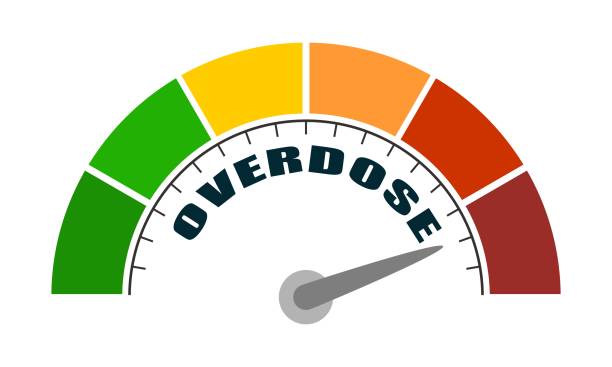
Immediate Steps and Veterinary Interventions
In case of suspecting an overdose of Otivet medication, it is crucial to stop its use. Taking action can significantly reduce the likelihood of side effects and expedite recovery in a clinical setting.
Recommended steps to take without delay include:
- Please cease any submissions. Record the most recent dosage, along with how often it was administered.
- Thoroughly flush the ear canal with saline or a gentle ear cleanser to clear away any remaining ointment and minimize absorption.
- Keep an eye on factors such as body temperature, heart rate, hydration level, and any changes in behavior within the first day or two.
Taking care of animals in a setting could include the following tasks.
- Laboratory assessment includes analyzing blood samples to check electrolyte levels as cortisol concentration and to evaluate kidney or liver function.
- In some cases healthcare providers may give IV fluids to help organs function better and speed up the bodys removal of substances it absorbs.
- Consider using nausea medications or stomach protection options if you experience notable gastrointestinal issues.
- Patients showing signs of HPA axis suppression may benefit from support or tapering protocols if they have been exposed to corticosteroids for a prolonged period.
XIII. Careful Administration
Precision in Dosing: Techniques and Tools
To make sure Otivet Ear Ointment is applied accurately for treatment and to reduce the chances of irritation or incomplete dosages, in animals like breeds and cats that may be more sensitive due, to skin or hormonal conditions; Make sure to use graduated applicators or droppers for measuring of drops to maintain dosage and avoid, over application.
Consider the following recommendations,
- For each breed, determine the amount based on the size of the ear canal and the thickness of the epithelium.
- Especially important for brachycephalic breeds or those more susceptible to chronic otitis.
- Before applying the ointment make sure to check the ear canal for any buildup or dirt to ensure that the passage is free, from obstruction, which can prevent the ointment from being diluted or blocked effectively.
- Ensure to exert pressure while using squeeze tubes to avoid release of excess medication – keep the pressure light and steady throughout the process.
Educating Pet Owners on Proper Application
Success in treating ear conditions in pets heavily relies on owners following instructions and using the proper techniques with Otivet Ear Ointment to avoid any potential issues like incorrect dosing or unnecessary stress on animals due to misunderstandings or fears associated with treatment. Clear guidance through written instructions is crucial for ensuring the usage of Otivet Ear Ointment and achieving the best results for your pet's ear health.
Remember to focus on points when using Otivet Ear Ointment to guarantee its effectiveness:
- Show the owner how to administer the dose, at the clinic by instruct them on handling techniques and proper positioning as well as providing guidance on aftercare to help them feel more at ease.
- Explain the anatomy of the ear to the pet owners, grasp the structure of both the horizontal canals, ensuring that they apply medication at the angle and depth.
- Prioritize cleanliness by advising owners to clean their pets' ears before each use of the product and recommend avoiding the use of cotton swabs that could potentially push debris further into the ear canal.
- Share written dosing plans, with personalized charts or checklists to enhance compliance, among households managing pets over several days.
- To create a setting for your pet during times by offering treats or praise to establish positive connections with the treatment.
XIV. Storage Recommendations
Optimal Storage Conditions to Maintain Efficacy
To keep Otivet Ear Ointment effective and safe for long-term use, it is essential to follow the recommended storage instructions to prevent degradation of its components, which could compromise its healing properties and increase the risk of contamination in veterinary clinics and among pet owners alike.
It is crucial to maintain storage conditions throughout the product's lifespan to ensure its efficacy and safety.
- Please store this product at a room temperature of 15°C to 25°C (59°F to 77°F).
- Ensure it is shielded from heat, cold, and sudden temperature changes. Remember to store it in a place that maintains the quality of the ointment and its packaging, as excess moisture can compromise it.
- Exposure to sunlight should be avoided to maintain the effectiveness of components, as they may degrade with light exposure and UV rays, thereby reducing their effectiveness in reducing inflammation.
- Remember to close the lid after every use to keep out any germs and prevent volatile ingredients from evaporating.
- Remember to keep medicines separate, far away from food and animal feed to avoid inadvertent consumption or mixing.

Shelf Life and Expiry Information
Otivet Ear Ointment typically has a shelf life of 24 to 36 months, starting from the date of manufacture. Can vary based on how its made and packaged. The expiration date indicated on the packaging is the key to using it effectively.
Other things to keep in mind about its expiration:
- Avoid using the product once it passes its expiration date to prevent decreased effectiveness and higher chances of side effects occurring.
- After you've opened the tubes its recommended to use up the contents within 30 to 60 days to limit degradation and contamination risks in environments that're not sterile.
- Check visually. By smell, for any alterations in color, texture, or scent, as reasons to discard immediately, regardless of the expiration date printed on the item.
- Remember to follow the disposal guidelines for pharmaceuticals and avoid disposing of them in household garbage or flushing them down wastewater systems.
XV. Handling Precautions
Safe Handling Practices for Pet Owners and Veterinarians
Using Otivet Ear Ointment correctly is crucial to protect both the user and the animal while ensuring the product works effectively. Whether you're, in a clinic or at home being careful about hygiene and how you apply the ointment can reduce the chances of contamination accidental exposure and unwanted side effects.
Necessary precautions for handling include:
- Remember to wear gloves when applying medications to your skin to avoid contact, with corticosteroids and antibiotics; this is especially crucial for those, with skin or weakened immune systems.
- Keep away, from eyes and sensitive areas of the body; if contact happens by accident rinse well with water.
- Consult a healthcare professional if irritation persists. Make sure animals don't lick the product after applying it; keep an eye on the pet to avoid them swallowing it or spreading it to parts of their body— in homes, with multiple pets.
- Remember to sanitize surfaces and wash your hands diligently after each use to maintain cleanliness and hygiene standards, even if you were wearing gloves during the process.
- Ensure the tube is stored in a location inaccessible to children and pets, such as a locked cabinet or a high area, to prevent unintended access or improper handling.
Disposal of Expired or Unused Ointment
Managing veterinary medications is crucial to safeguard the environment and public well being, from harm caused by disposal methods like throwing them in regular garbage or flushing them down the toilet, which could result in water pollution or unintended consumption, by wildlife or pets.
To ensure disposal, it is advised to follow guidelines including:
- It's important not to dispose of products, like ointment bases and active compounds as they can harm life and have long lasting effects, on the environment.
- Make sure to bring any medications to veterinary clinics or designated collection sites as many clinics are part of programs that facilitate the return process or they can guide pet owners to proper disposal services.
- Always follow the rules in your area regarding the disposal of medications.
- Your city or region might have its specific instructions that you need to follow carefully.
- Before disposing of the tube using procedures make sure to erase any details or pet identification to safeguard privacy and avoid potential misuse.
- Avoid reusing containers for other purposes. It's best not to use partly used tubes for storing other creams or household products.










